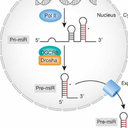Aldehyde dehydrogenase (ALDH) superfamily in plants: gene nomenclature and comparative genomics.
Parole chiave
Astratto
In recent years, there has been a significant increase in the number of completely sequenced plant genomes. The comparison of fully sequenced genomes allows for identification of new gene family members, as well as comprehensive analysis of gene family evolution. The aldehyde dehydrogenase (ALDH) gene superfamily comprises a group of enzymes involved in the NAD(+)- or NADP(+)-dependent conversion of various aldehydes to their corresponding carboxylic acids. ALDH enzymes are involved in processing many aldehydes that serve as biogenic intermediates in a wide range of metabolic pathways. In addition, many of these enzymes function as 'aldehyde scavengers' by removing reactive aldehydes generated during the oxidative degradation of lipid membranes, also known as lipid peroxidation. Plants and animals share many ALDH families, and many genes are highly conserved between these two evolutionarily distinct groups. Conversely, both plants and animals also contain unique ALDH genes and families. Herein we carried out genome-wide identification of ALDH genes in a number of plant species-including Arabidopsis thaliana (thale crest), Chlamydomonas reinhardtii (unicellular algae), Oryza sativa (rice), Physcomitrella patens (moss), Vitis vinifera (grapevine) and Zea mays (maize). These data were then combined with previous analysis of Populus trichocarpa (poplar tree), Selaginella moellindorffii (gemmiferous spikemoss), Sorghum bicolor (sorghum) and Volvox carteri (colonial algae) for a comprehensive evolutionary comparison of the plant ALDH superfamily. As a result, newly identified genes can be more easily analyzed and gene names can be assigned according to current nomenclature guidelines; our goal is to clarify previously confusing and conflicting names and classifications that might confound results and prevent accurate comparisons between studies.


